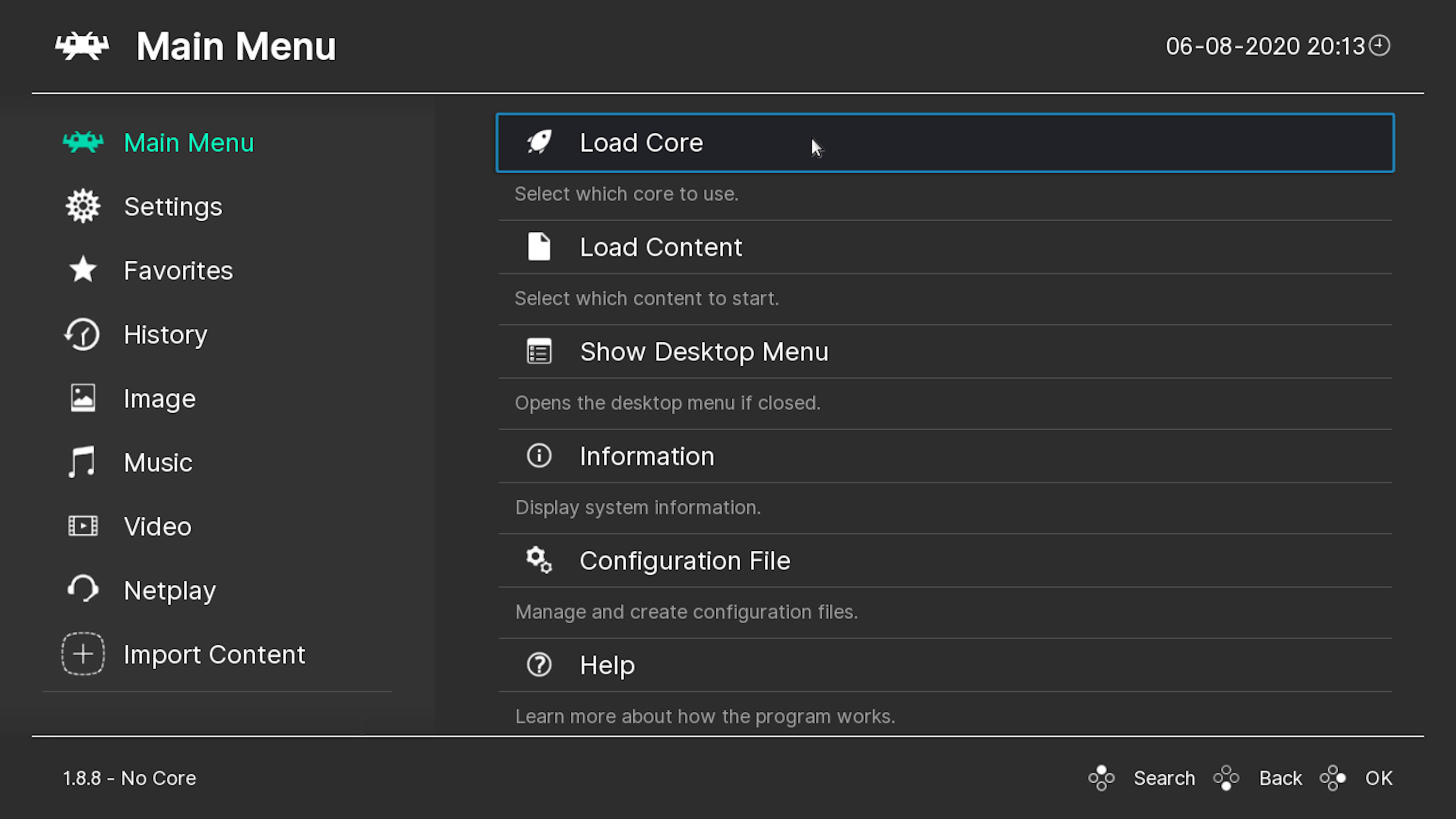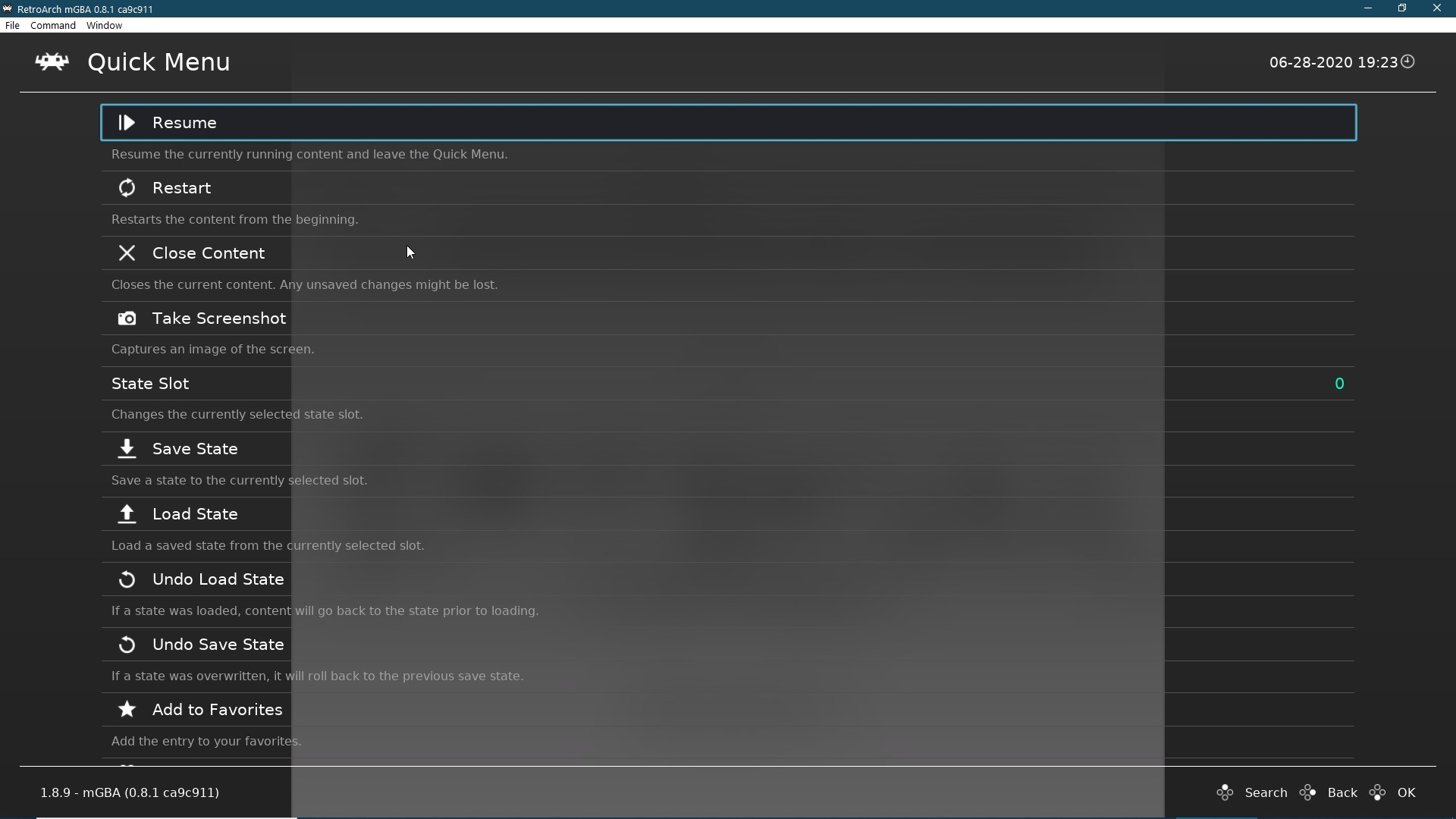
- #Retroarch windows setup audio drivers
- #Retroarch windows setup audio update
- #Retroarch windows setup audio driver
CORE INFO CACHE: Remove core path from core info cache.CONFIG: Add option to (force-)write current core options to disk (Quick Menu).CHEATS/RUNAHEAD: Fix cheats when using second instance runahead.CHEATS: Add enhanced search functionality to the ‘Cheats’ menu.AUDIO/RESAMPLER/ARM NEON: Add intrinsic NEON version for lanczos sinc function – should lead to optimized codepaths for AArch64/ARMv7 architectures without being dependent on ASM codepaths.AUDIO/CONVERSION/ARM NEON: Add intrinsic NEON versions for float_to_s16/s16_to_float – should lead to optimized codepaths for AArch64/ARMv7 architectures without being dependent on ASM codepaths.AUDIO/RESAMPLER/MIXER: Fix menu sounds (audio mixing) when using the ‘sinc’ resampler with quality lower than ‘normal’.AUDIO/MIXER: Ensure than menu sounds are re-enabled when calling CMD_EVENT_AUDIO_REINIT.3DS/SAVESTATES: Save and load save states to and from RAM.Other fantastic additions today include the RetroArch 3DS port will also be gaining a bottom interactive touchscreen menu for the first time! Added enhanced search functionality to the ‘Cheats’ menu, Faster sinc resampler and audio conversion for ARM NEON platforms AND a huge list of overall fixes and performance improvements.Įither way, I’ll be updating my arcade (again) later today! Changelog While HDR already works on the UWP version on PC, on Xbox there are currently several deal-breaking display issues with it, so it remains disabled there for now.” Previously, it would always compile frontend shaders against Shader Model 4.0, and unfortunately the AMD FSR shader that has just been added needs SM 5.0 capabilities in order to work.
#Retroarch windows setup audio driver
We now let Direct3D 11 compile frontend shaders against Shader Model 5.0 (SM 5.0) in case your graphics card driver supports D3D11 Feature Level 11.0 or higher. If it doesn’t show up, your display device might simply not support HDR. In Windows, go to ‘Display Settings’ (pictured below) and make sure the HDR setting is turned on. Make sure HDR is enabled in Windows in case you don’t see it pop up. In case you don’t see the option, and you have made sure first that your driver is set to Direct3D 11/12, it might be that HDR is disabled in Windows 10. In order to change to D3D11/12, go to Settings -> Drivers, and change Video to ‘D3D11/12’. “The HDR settings can be found in Settings -> Video when you are using the Direct3D 11 or 12 driver.


Of course, how this will perform over various cores will no doubt be on a per-game basis. If that wasn’t enough, there’s now also HDR (High Dynamic Range) support in RetroArch’s Direct3D 11/12 driver.
#Retroarch windows setup audio update
“We have had to update our Direct3D 11 driver to allow for the use of Shader Model 5.0 when your GPU supports it, since this shader requires SM 5.0 features and wouldn’t work on D3D11 without it.”

#Retroarch windows setup audio drivers
“AMD FSR as an slang shader for use in RetroArch! This shader should be fully compatible with the following video drivers in RetroArch:


 0 kommentar(er)
0 kommentar(er)
